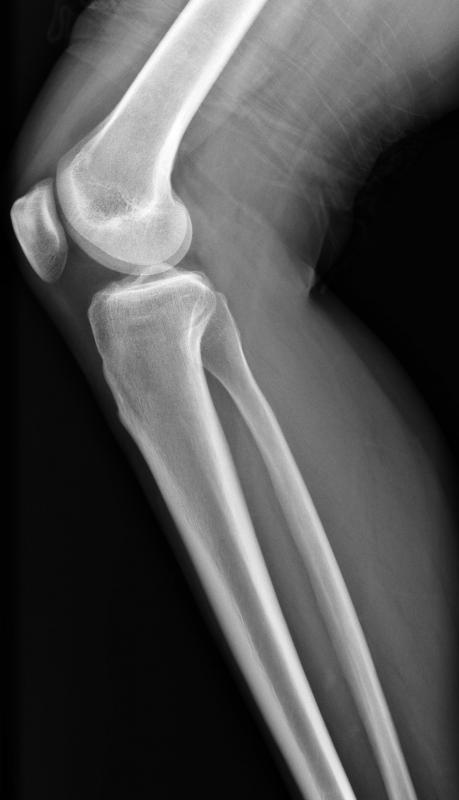At TheHealthBoard, we're committed to delivering accurate, trustworthy information. Our expert-authored content is rigorously fact-checked and sourced from credible authorities. Discover how we uphold the highest standards in providing you with reliable knowledge.
What is a Tibia Fracture?
A tibia fracture is a break in the tibia, the major bone in the lower leg which is also known as the shinbone. After the femur, the tibia is the longest bone in the body, and it is a major weight bearing bone, which can make a fractured tibia extremely problematic. Recovery times can be in the months, especially in the case of complex fractures, and if the fracture is not treated properly, patients can experience complications like changes in limb length and compartment syndrome.
People who have a tibia fracture usually know it, because they experience intense and unremitting pain. They may not be able to walk or put any weight on the leg, and the shinbone may appear distorted or at a strange angle. Swelling is also a common symptom, and in the case of an open fracture, the broken bone will protrude through the skin.

When any area between the knee and the ankle is broken, it is known as a shaft fracture. A plateau fracture is a tibia fracture which occurs just below the knee, while fractures just above the ankle are known as plafond fractures. Often, the fibula, the other bone in the lower leg, is also involved in the break, because the strain on the tibia can cause the fibula to snap as well.

In addition to basic closed fractures in which the skin remains closed and the bone is broken in a variety of ways, it is also possible to see open fractures, in which the bone breaks through the skin, along with stress fractures, in which the bone is cracked due to stress. Athletes are especially prone to stress fractures of the tibia. Another special kind of tibia fracture is the so-called “toddler's fracture,” which happens when a child learning to walk stumbles and falls against steps or other elevation changes.

In order to treat a tibia fracture, a doctor will need to take x-rays to determine the extent of the break. Once he or she has reviewed the films, treatment recommendations can be made. Sometimes, a simple cast is enough to immobilize the bone once it has been set. In other cases, it may be necessary to use surgery to stabilize the bone. The patient also commonly needs to refrain from load-bearing exercise while the fracture heals.

During the recovery from a fracture of the tibia, the patient may need to attend follow-up appointments so that a doctor can check the progress of the healing. Doctors are concerned about nonunion, in which a fracture fails to heal, along with other complications such as irregular healing along a growth plate in children, or healing at the wrong angle. If these problems are identified early, they are much less complicated to treat.
AS FEATURED ON:
AS FEATURED ON:















Discussion Comments
I just found out I had a stress fracture and didn't know it. I just thought I twisted my knee.
Tibia fractures can occur when a person fails to heed the warning signs of shin splints. When your body hurts; it's telling you to take it easy, and also that you may need to seek medical help.
As the article said, most people know from the pain when they are having fracture symptoms.
I have known a couple people who mistakenly thought they had shin splints when they actually had a tibia fracture. Fracture symptoms can be very similar to what you experience with shin splints.
Post your comments